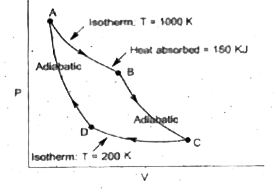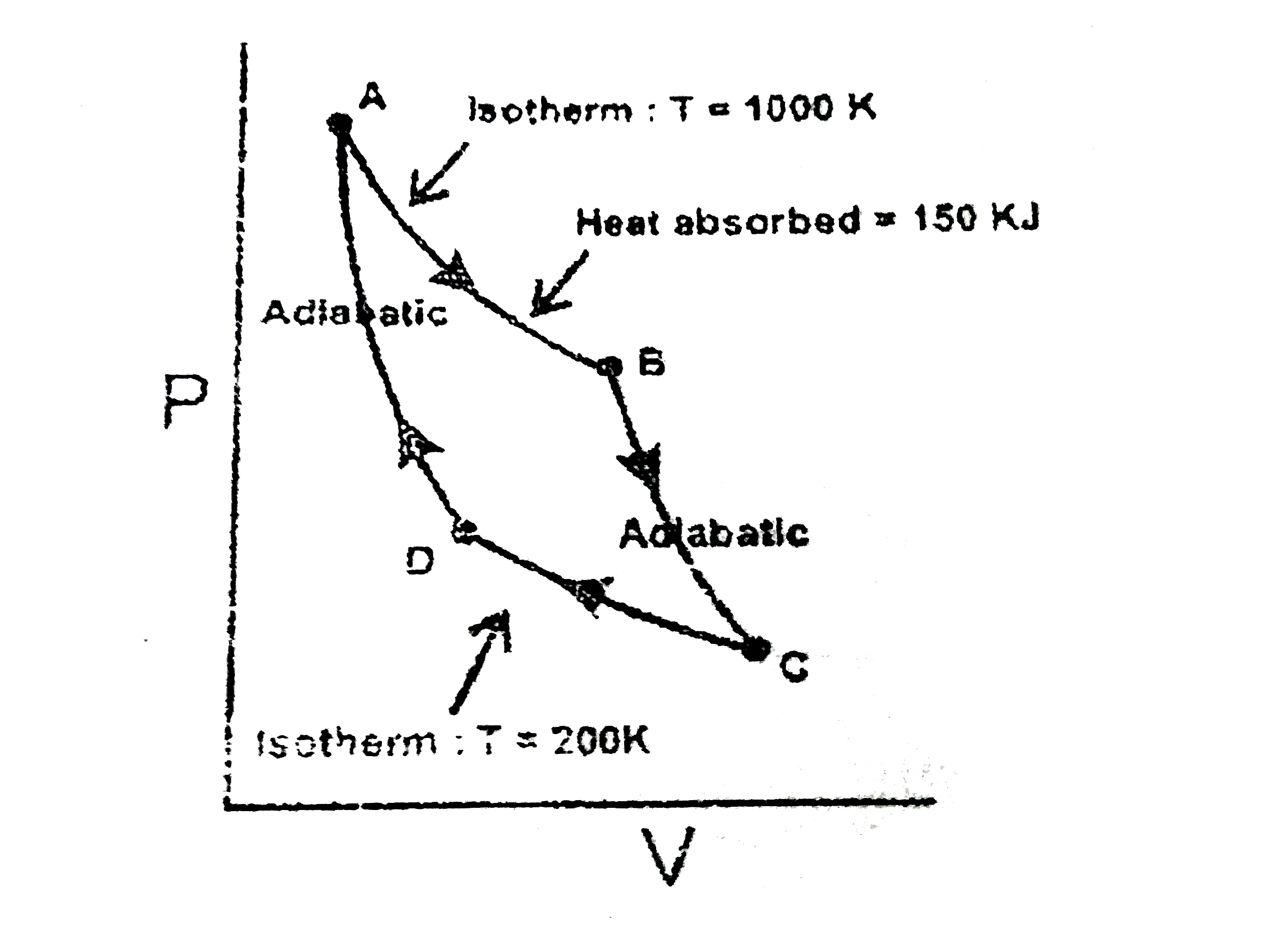The accompanying diagram represents a reversible cannot cycle for an ideal gas:

What is the entropy increase during isothermal at 1000K?
A
0.15KJ−1
B
150KJK−1
C
150JK−1
D
750JK−1
Video Solution
Text Solution
The correct Answer is:C
ΔS=qrevT=qhTh=150×1031000=150JK−1
|
Topper's Solved these Questions
- THERMODYNAMICSBOOK - RESONANCECHAPTER - THERMODYNAMICSEXERCISE - exercise-3 part-III Advanced level Solutions (STAGE-I)
6 Videos
- THERMODYNAMICSBOOK - RESONANCECHAPTER - THERMODYNAMICSEXERCISE - exercise-3 part-III Advanced level Solutions (STAGE-II)
45 Videos
- THERMODYNAMICSBOOK - RESONANCECHAPTER - THERMODYNAMICSEXERCISE - exercise-3 part-1 Advanced level Solutions
30 Videos
- TEST SERIESBOOK - RESONANCECHAPTER - TEST SERIESEXERCISE - CHEMISTRY
50 Videos
Similar Questions
Knowledge Check
The accompanying represents a reversible camot cycle for an ideal gas:

What is the entropy increase during isothemal expansion at 1000 K?A0.15JK−1B150JK−1C150JK−1D750JK−1The accompanying diagram represents a reversible cannot cycle for an ideal gas:

What is the Gibbs free energy change during the process A→B ?A150 KJB−150KJC30 KJDdata are not sufficientThe accompanying diagram represents a reversible cannot cycle for an ideal gas:

How many heat is rejected at the lower temperature, 200K, during the isothermal compression?A150 KJB30KJC120KJDdata are not sufficient to calculate exact value
In reversible isothermal expansion of an ideal gas :
View SolutionDuring an isothermal reversible expansion of an ideal gas, its
View SolutionFor the isothermal reversible expansion of an ideal gas
View SolutionDuring the isothermal of an ideal gas :
View SolutionDuring an adiabatic reversibly expansion of an ideal gas
View Solution
